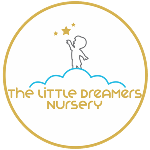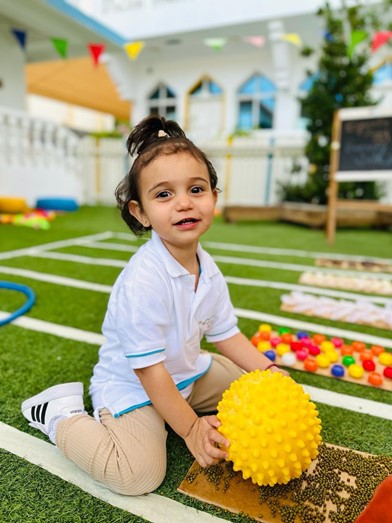Toys are more than just fun for babies—they play a crucial role in infant development, helping babies build motor skills, cognitive abilities, and sensory awareness. With so many options available, choosing the best baby toys can feel overwhelming.
In this guide, we will break down:
✔ Why toys are important for a baby’s development
✔ The best toys by each age group
✔ Safety considerations when choosing toys
By selecting age-appropriate toys, you can support your baby’s brain development, motor coordination, and sensory exploration while making playtime engaging and educational!
Why Do Toys Matter for Baby Development?
Play is how babies learn! From their first grasp to their first steps, toys help stimulate growth in key areas:
✔ Motor Skills – Toys encourage grasping, reaching, and crawling, strengthening fine and gross motor coordination.
✔ Cognitive Development – Interactive toys promote problem-solving and memory skills.
✔ Sensory Stimulation – Textured, musical, and high-contrast toys enhance visual, auditory, and tactile development.
✔ Emotional & Social Skills – Pretend play and interactive toys help babies understand emotions, build confidence, and practice communication.
💡 Did you know? Research shows that babies who engage in music-based play develop better communication and social skills. Explore the benefits of Music Classes for Kids for more insights!
 Best Toys for Baby Development by Age
Best Toys for Baby Development by Age
📌 0–3 Months: Sensory Stimulation & Visual Focus
Newborns are still adjusting to the world, so toys should focus on sensory engagement and eye-tracking skills.
✔ Black and white contrast books – Helps stimulate early vision.
✔ Soft rattles & crinkle toys – Engages hearing and grasping reflexes.
✔ High-contrast mobiles – Encourages visual tracking.
✔ Soft tummy-time mats – Strengthens neck and core muscles.
💡 Tip: At this stage, hearing your voice and seeing your face is the best form of stimulation—talk, sing, and make eye contact often!
📌 3–6 Months: Grasping & Early Coordination
Babies begin grasping, reaching, and putting things in their mouth to explore their surroundings. Choose toys that encourage movement and hand-eye coordination.
✔ Soft, textured teething toys – Soothes sore gums while enhancing tactile awareness.
✔ Activity gyms with hanging toys – Encourages reaching and kicking.
✔ Light-up or musical toys – Stimulates cause-and-effect learning.
✔ Soft mirrors – Babies love to look at faces, and mirrors and this encourages self-recognition.
💡 Tip: Babies at this stage love repetition—playing the same game or song multiple times helps them learn patterns!
- 📌 6–12 Months: Crawling, Problem-Solving & Social Play
As babies become more mobile, they need toys that encourage exploration and interactive learning.
✔ Stacking cups & nesting toys – Develops fine motor skills and problem-solving.
✔ Push-and-pull toys – Encourages crawling and walking.
✔ Soft dolls or plush animals – Helps build emotional connection and comfort.
✔ Musical instruments (baby-safe drums, shakers, xylophones) – Promotes rhythm, coordination, and auditory development.
💡 Try This: Engage in musical play by clapping, dancing, or using baby-safe instruments! Learn more about Music Classes for Kids and how music supports early learning.
📌 12–24 Months: Walking, Pretend Play & Language Development
Toddlers love copying adults, problem-solving, and testing their independence. At this stage, toys should support imaginative play, communication, and physical coordination.
✔ Ride-on toys & push walkers – Strengthens leg muscles and balance.
✔ Shape sorters & puzzles – Enhances problem-solving and fine motor control.
✔ Building blocks – Improves spatial awareness and creativity.
✔ Pretend play toys (kitchen sets, toolkits, baby dolls) – Encourages imagination and role-playing.
✔ Board books & talking toys – Supports early language skills.
💡 Tip: Reading books together is one of the best ways to build vocabulary and encourage a love for learning!
Toy Safety Considerations for Babies
Safety is just as important as educational value when choosing toys for infants. Here’s what to keep in mind:
✔ Choking Hazards – Avoid small parts or loose pieces for babies under 3 years old.
✔ Non-Toxic Materials – Choose toys made from BPA-free plastic, organic fabric, or untreated wood.
✔ No Sharp Edges – Ensure all toys have rounded edges and no breakable parts.
✔ Easy to Clean – Babies put everything in their mouths! Opt for washable, wipeable toys.
✔ Certified Safe – Look for safety labels (e.g., ASTM, CE, or CPSC certified).
💡 Tip: Always supervise play, especially with new or interactive toys!
Conclusion: The Best Toys Are the Ones That Support Growth & Fun!
Toys aren’t just about keeping babies entertained—they help build essential motor, cognitive, and social skills. By choosing age-appropriate, safe, and engaging toys, you can enhance your child’s development while making playtime fun!
✔ For newborns: Sensory toys that stimulate vision & hearing.
✔ For 3–6 months: Toys that encourage grasping & coordination.
✔ For 6–12 months: Toys that promote movement & problem-solving.
✔ For 12–24 months: Toys that encourage pretend play & language growth.
💡 Action Step for Parents: Take a look at your baby’s toy collection! Are they engaging, safe, and developmentally appropriate? If not, consider adding a few new toys that align with your baby’s current milestones.
💬 What’s your baby’s favorite toy right now? Share in the comments below!









